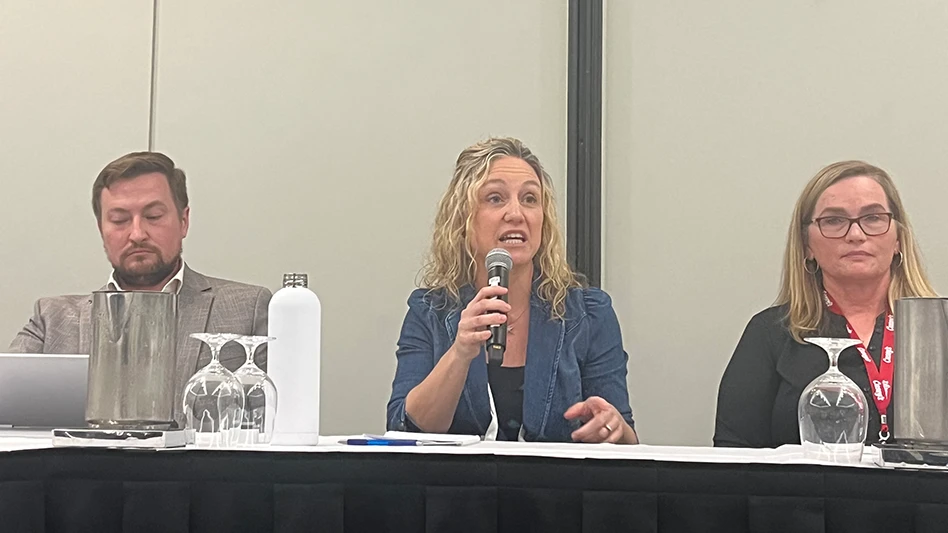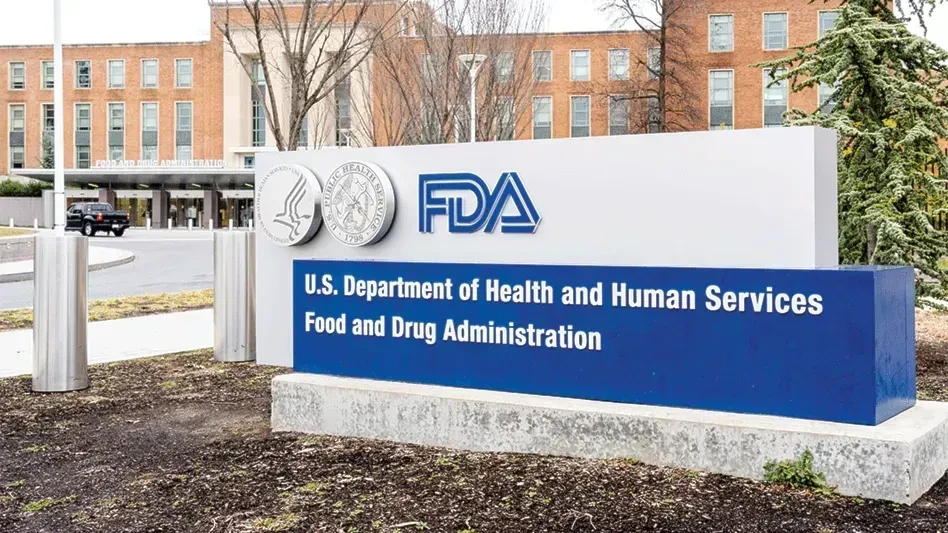
TORONTO — Day three of IAFP 2023, the International Association for Food Protection’s annual meeting, featured another full day of sessions, including ones covering food safety culture and data, plus the final day of the exhibit hall, filled with over 150 booths.

ON THE EXHIBIT HALL FLOOR. At the bioMérieux booth, Adam Joelsson, senior director of technology and research and development, talked to QA about the industry moving toward a more risk-based model and the way data can play a role in lowering the number of foodborne illness outbreaks.
“If you've been in some of these technical talks and sessions this week, you're probably getting a sense that the theme is that the industry at large is moving to a more a risk-based model,” he said, “as opposed to just qualitative testing at the factory or finished products. There's a recognition that's what we're doing today is good, but if you view that through the lens of epidemiology and you look at food safety disease like salmonellosis cases of Listeria, it’s plateaued over the last five to 10 years. As diagnostic developers and industry manufacturers of food, what can we collectively do to move those numbers down?”
As the industry evolves, databases of whole genome sequences, incidents of outbreaks and strains found in the environment continue to grow rapidly, Joelsson said.
“There’s a lot of data to be mined there,” he said. “And then you overlay metadata on that — geography, time of year, equipment, raw materials incoming — and now you have this way of analyzing and looking at this issue in a very different way. Ultimately, what we do is to take that and distill it into something practical.”
At the ASI booth, CEO Tyler Williams talked to QA about the company’s recent merger with Kiwa Group.
“They do the same thing we do, just on a much larger scale around the world,” he said. “We’re mainly focused on North America, with U.S. being our biggest market. Canada’s second, and then Mexico and the Caribbean are our third biggest market. They were looking for a bigger footprint in the U.S., we were looking for a partner to grow with and expand our services, and so it was just a good marriage.”
With the merger, ASI is expanding its portfolio by offering more certification services, including BRC (Brand Reputation through Compliance), FSSC (Food Safety System Certification) and other GFSI standards, Williams said.
Looking toward the future, Williams, who became CEO of ASI in January, said he’s interested to see how the reorganization of the FDA will shape the food industry.
“I think we’re going to start seeing more government-private relationships out of this,” he said. “I think everybody knows the FDA has a limited set of resources. They can’t audit every facility every year or every three years like they’re supposed to for certain categories. So I think we’re going to see more support from the private industry sector to help the FDA out. It’s a cool position we’re in to see it unfold, because I think the changes at the FDA are going to help a lot of people, and hopefully for the better.”
FOOD SAFETY CULTURE. The session “How to Use Data to Identify Key Needs and Drive Evidence-Based Organizational Food Safety Culture Change: Learnings from the Dairy Industry” featured a presentation from Conrad Choiniere, director of the Office of Analytics and Outreach, FDA, on FDA’s goals for food safety culture.

“Right now, we see ourselves as an enabler,” he said. “We do not see ourselves as regulating food safety culture. … For now, we’re looking at ways to try to facilitate conversation across industry.”
How to define food safety culture? “You ask 20 people, and you’ll get 20 different answers,” Choiniere said. One of the most cited definitions is this one from Griffith, Livesey and Clayton: “The aggregation of the prevailing, relatively constant, learned, shared attitudes, values and beliefs contributing to the hygiene behaviors used within a particular food handling environment.”
One gap in the industry is the lack of tools specifically designed to help create and promote food safety culture, Choiniere said. There’s also a research gap for direct links between food safety culture and the microbial environment.
“We are exploring ways as an agency to get that collective data together and provide some way for industry to share that data without fear of retribution so we can actually learn from it,” he said.
DATA IN RETAIL AND FOODSERVICE. “Organizations are all at different points in their data journey,” said Chris Jordan, director of business development, retail food safety and sanitation at Diversey, who moderated the session “Practical and Effective Approaches and Uses of Data in Retail and Foodservice Food Safety Programs.”

Meghann McLeod, food safety director at Yum! Brands, advised companies to put in the hard work upfront to create a data governance model so they can trust the story their data tells.
“Data integrity is so foundational to what we do,” she said. “We have to be able to trust in what our data tells us.”
Melanie Harris, food safety manager at Casey’s General Stores, said her company’s food safety data collection is in its early stages as her team determines the best way to centralize and use data.
“It’s all trial and error,” she said.

Messaging around food safety data needs to be simple and clear for executive leadership and other team members to take action on critical issues, said Tom Ford, vice president, food safety and quality assurance, Compass Group. If they can easily understand the action steps needed to resolve a food safety issue, they’ll be more likely to resolve the problem, he said.
 Tom Ford, vice president, food safety and quality assurance, Compass Group, talks about how to craft messaging about data for upper management.
Tom Ford, vice president, food safety and quality assurance, Compass Group, talks about how to craft messaging about data for upper management.So, how do food safety professionals get buy-in from leadership to invest in data?
“I had to educate the executives about food safety,” said Al Baroudi, vice president, food safety and quality assurance, The Cheesecake Factory. He did this by providing real-life examples, he said, such as pointing out a restaurant chain similar in size to the Cheesecake Factory that went bankrupt and defunct after several deaths and illnesses related to foodborne illness.

Latest from Quality Assurance & Food Safety
- New Study Examines Kaempferol's Role in Taming Allergic Responses
- Will Bird Flu Be the End of Holiday Traditions Like Eggnog?
- FDA Cuts AFDO SAFHER Funding
- FSQAs Share Their Best Food Safety Tips for Santa
- 12 TAG Food Safety Consultants Named FSPCA PCHF Version 2 Lead Instructors
- FSIS Announces Stronger Measures to Protect Public from Listeria
- Eagle Product Inspection to Showcase X-ray Technology at IPPE 2025 Trade Show
- Dr. Al Baroudi: 'Food Safety Is Not Negotiable'





